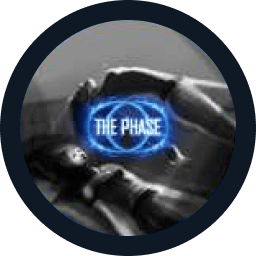Lucid Dreaming Mask – Improve the Quality of Your Practices
Lucid Dreaming App – Dream Diary, Social Network and Monitoring of Your Dreams
Sleep paralysis is a condition that occurs between falling asleep and waking up during which a person loses some or all of their ability to move. It feels as if their muscles have atrophied. If you’re not aware of what causes sleep paralysis and what it looks like, these uncomfortable sensations can become more intense if you find yourself in this condition. Therefore, it’s worth studying this phenomenon so you won’t be scared if it happens to you.
What Is Sleep Paralysis, and Why Does It Occur?
Sleep paralysis (also known as “stupor”) is a condition that renders a person unable to move, though their consciousness is active. It exists on the borderline between the states of sleep and wakefulness. The person’s body remains asleep after the brain has woken up. This is a natural process that keeps the body still while sleeping to prevent a person from performing involuntary movements that could cause harm (e.g., falling out of bed).
People don’t usually remember sleep paralysis episodes because they’re either falling asleep or waking up when it happens. If the consciousness hasn’t “fallen asleep” yet or has already been activated, people may experience fear due to their apparent helplessness and vulnerability. The process may be accompanied by visual hallucinations or the feeling of intense pressure on the chest. Naturally, the question arises: how can one prevent this state from occurring?
Scientists believe that muscle atony during sleep is necessary to prevent body movement. This allows a person to rest without endangering themselves or those nearby. So, despite the discomfort associated with it, sleep paralysis is a normal protective condition.
Sleep Paralysis Symptoms
Imagine waking up and being unable to move your arms or legs, say anything, or call for help. These are the sensations described by everyone who has experienced this phenomenon. According to studies, the signs of sleep paralysis strongly resemble the signs of near-death experiences.
But in reality, this condition is a natural part of our sleep process. During the REM sleep phase, the brain becomes active, but the body remains motionless (except for the eyes and breathing muscles). This allows a person to mentally perform actions in their dreams without actually moving, which could be dangerous.
Sometimes, disruptions occur by which the brain becomes active, and the person can even open their eyes and look around, but body movement remains impossible. Some people experience hallucinations — these can be clear or blurry images. Not everyone understands what’s happening at such a moment. Some might even think they have a serious illness (e.g., a stroke or atonia), not realizing that sleep paralysis is completely natural and normal.
What does sleep paralysis look like? Here are the symptoms indicating that a person is experiencing this phenomenon:
- An inability to move (lasting up to several minutes but usually ending in a few seconds).
- An active and clear consciousness.
- An inability to speak. The person wants to say something but can’t. This is memorable because everyone in such a state wants to call for help.
- Frightening sensations, often accompanied by hallucinations. Most people see only dark spots or blurry silhouettes, but some can make out clear images.
- Pressure on the chest.
- A blurred line between reality and illusions.
- Feeling like death is near.
- Panic attacks.
- Muscle pain.
- Migraines of varying intensity. Sometimes, this is felt as a throbbing pain in the temples, and other times it is felt in the back of the head. Most often, it is felt in the forehead.
What Causes Sleep Paralysis?
Sleep paralysis is a scientifically proven phenomenon that many have tried to study. However, its exact causes have not yet been established. The human brain is a complex structure, and some processes can only be superficially explained. There are several hypotheses about the causes of sleep paralysis:
- Disrupted sleep patterns (e.g., working too many hours)
- Depressive states
- Personality disorders related to psychology or unstable emotions
- Increased anxiety caused by real or imagined problems
- Regular alcohol consumption or drug use
- Stress from one’s work or personal life
- Family problems that occupy one’s thoughts
- Obesity and emotional eating
- Physical overexertion
Research indicates that students most often encounter this condition upon awakening due to several factors:
- Heavy workloads (e.g., students who work part-time jobs are vulnerable).
- A lack of sleep (young people are prone to disrupting their sleep schedules).
- High cognitive load, as they need to study and memorize a lot of material
- Anxiety from exams and fear of getting bad grades
- Hormonal instability (not all students have balanced hormones)
Three systems interact simultaneously to cause a person to fall asleep:
- An activating system
- A system responsible for REM phase
- A system responsible for non-REM phase
These stages replace each other very slowly and smoothly.
Since we experience over 80% of our dreams during REM phase, the body activates a protective mechanism during this sleep stage—it completely disables all muscles (except for those vital for survival). This is necessary so that the movements performed mentally in dreams aren’t replicated by the physical body.
Sleep paralysis occurs as follows:
- First, GABA (gamma-aminobutyric acid) is released.
- Then, glycine is produced, which blocks neurons. The spinal cord receives signals to disable the skeletal muscles.
- Together, these substances suppress muscle tone through the medulla oblongata.
Thus, you’re protected from performing active movements while sleeping and dreaming. However, sometimes, this mechanism malfunctions. For example, a person might exit REM phase and wake up before their body has regained the ability to move. Usually, the brain activates within a few seconds, but sometimes it takes several minutes.
If you experience sleep paralysis rarely, there is no cause for concern, especially if there are understandable reasons (e.g., if your stress level is unusually high or you’ve had a tough workweek). But if this condition becomes regular, it’s recommended to consult a specialist, as it indicates a disruption in the stable and coordinated workings of the three systems mentioned above.
Conclusion
Not all signs of sleep paralysis may manifest in a given episode. Most often, a person simply experiences temporary muscle atony without hallucinations or breathing difficulties. But even if these symptoms are present, there’s no need to worry, as long as you rarely encounter such a condition. Now you have comprehensive information about this phenomenon and understand that it’s merely a function of your body designed to protect you from harm during vivid dreams.
Best Books About Lucid Dreaming
FAQ
Recommended reading
How to get rid of sleep paralysis
Sleep Paralysis – How to Induce Step-by-Step with Indirect Techniques
Sleep paralysis: What it is and how to stop it – Best explanation on the internet









